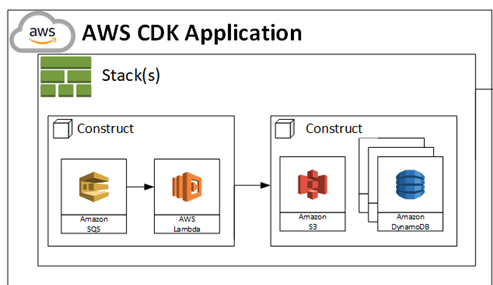Are you searching for the difference between AWS SDK and CDK? If so, you have come to the right place. Today we will explain both of them and then will look into the key differences and advantages of each one. If you’re new to Amazon Web Services (AWS), these two words might be unknow for you AWS SDK and AWS CDK. By learning the difference between these two tools can help you use AWS more effectively.
What is AWS SDK?
AWS SDK stands for Software Development Kit. It is a collection of tools and libraries that developers use to interact with AWS services like AWS Lambda, Amazon Simple Storage Service S3, etc. Think of it as a toolkit that helps you write code to manage your AWS resources. Whether you want to store data in S3, start an EC2 instance, or manage databases in RDS or DynamoDB, the AWS SDK has pre-built functions that make these tasks easier.

Key Features of AWS SDK:
- Ease of Use: Simplifies the process of writing code to interact with AWS services. With a few lines of code, you can interact with the service like in Python with just one function you can upload a file to S3.
- Language Support: Available in multiple programming languages like Python, Java, JavaScript, and more. You can use it in any language of your own choice.
- Functionality: You can automate tasks using SDK, e.g. if you want to upload a file automatically in S3 you don’t need to navigate to S3 in the Management Console and upload it, just simply use a function in your programming language to upload automatically.
In summary, the AWS SDK is like a bridge that helps developers connect their applications with AWS services through code.
What is AWS CDK?
AWS CDK stands for Cloud Development Kit. Unlike the SDK, which focuses on interacting with AWS services, the CDK is all about infrastructure as code (IaC). This means you use programming languages like Python to define and provision cloud resources. Instead of clicking around the AWS Management Console to set up resources, you write code that does it for you.

Key Features of AWS CDK:
- Declarative Syntax: Allows you to define cloud resources using familiar programming languages like TypeScript, Python, Java, and C#. You can choose one of your own choices.
- Reusability: You can create reusable components, making your infrastructure code more maintainable.
- Higher Abstraction: Provides higher-level abstractions for AWS services, making complex configurations simpler. For example, you can make EC2 with just a few lines of code.
AWS CDK allows you to manage your cloud infrastructure using code, bringing the power of software development practices to infrastructure management.
Key Differences Between AWS SDK and CDK
- Purpose:
- AWS SDK: Used for writing applications that interact with AWS services.
- AWS CDK: Used for defining and provisioning cloud infrastructure using code.
- Use Case:
- AWS SDK: Best for developers looking to integrate AWS services into their applications.
- AWS CDK: Perfect for DevOps teams and developers who want to manage infrastructure as code in their own programming language like Python, JavaScript, etc.
- Language Support:
- AWS SDK: Supports a wide range of programming languages.
- AWS CDK: Primarily supports TypeScript, Python, Java, and C#, with higher-level abstractions for easier infrastructure management.
Also Check: What is the difference between AWS CDK and CloudFormation?
Conclusion
If you know the difference between AWS SDK and CDK it can help you choose the right tool for you. If you need to write code that interacts with AWS services, the AWS SDK is your go-to toolkit. On the other hand, if you want to manage your cloud infrastructure using code, the AWS CDK is your friend. Both tools offer powerful features that can simplify and enhance your AWS experience.
By knowing when to use AWS SDK and when to go for AWS CDK, you can make the most of AWS and build more efficient, scalable, and maintainable cloud systems.




Leave a Reply